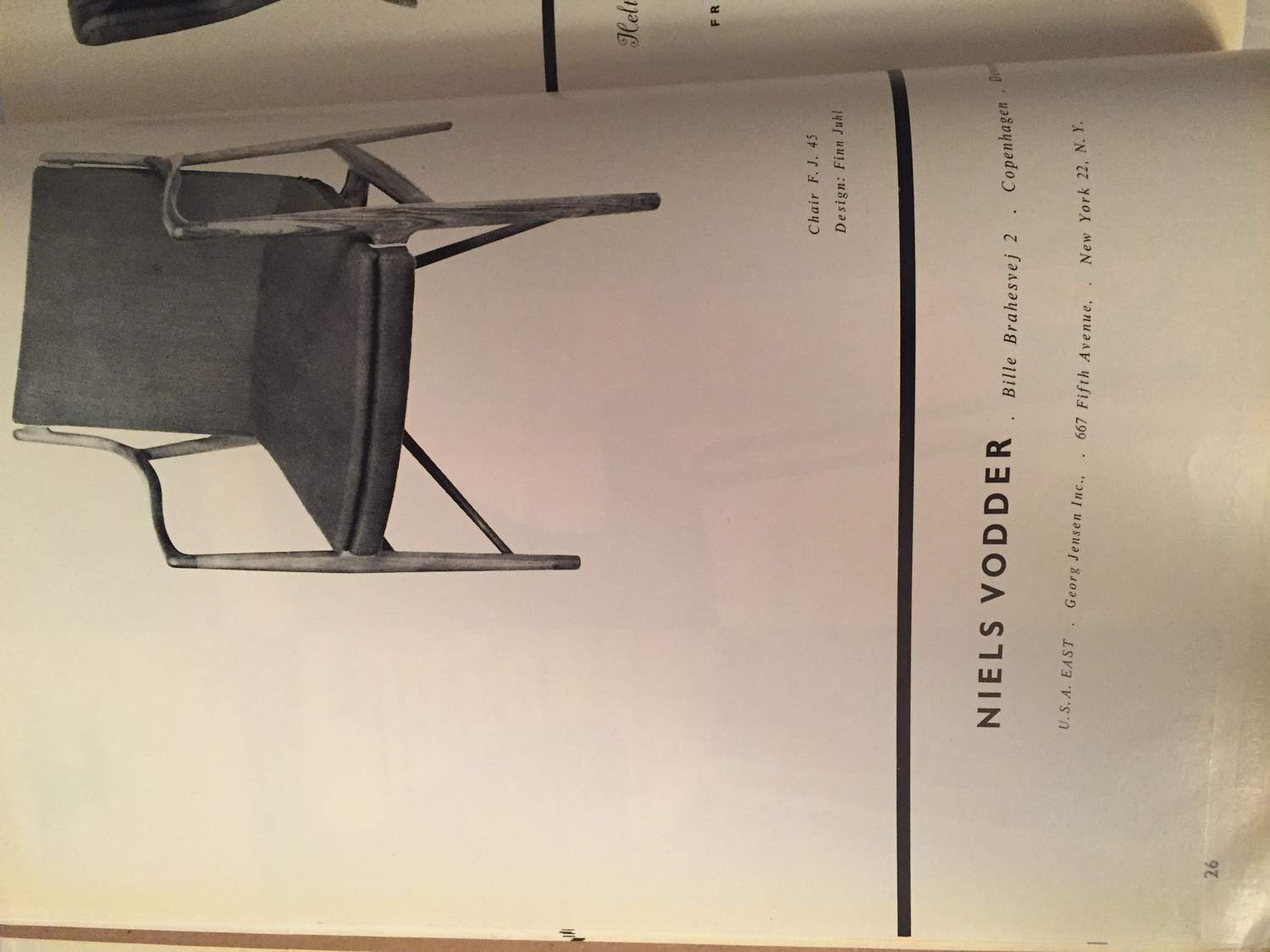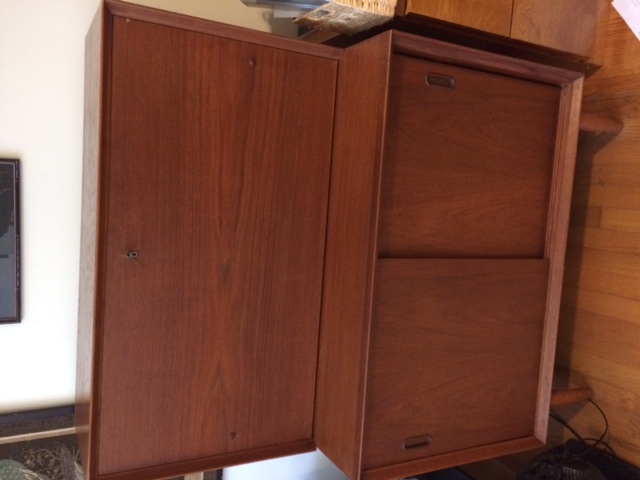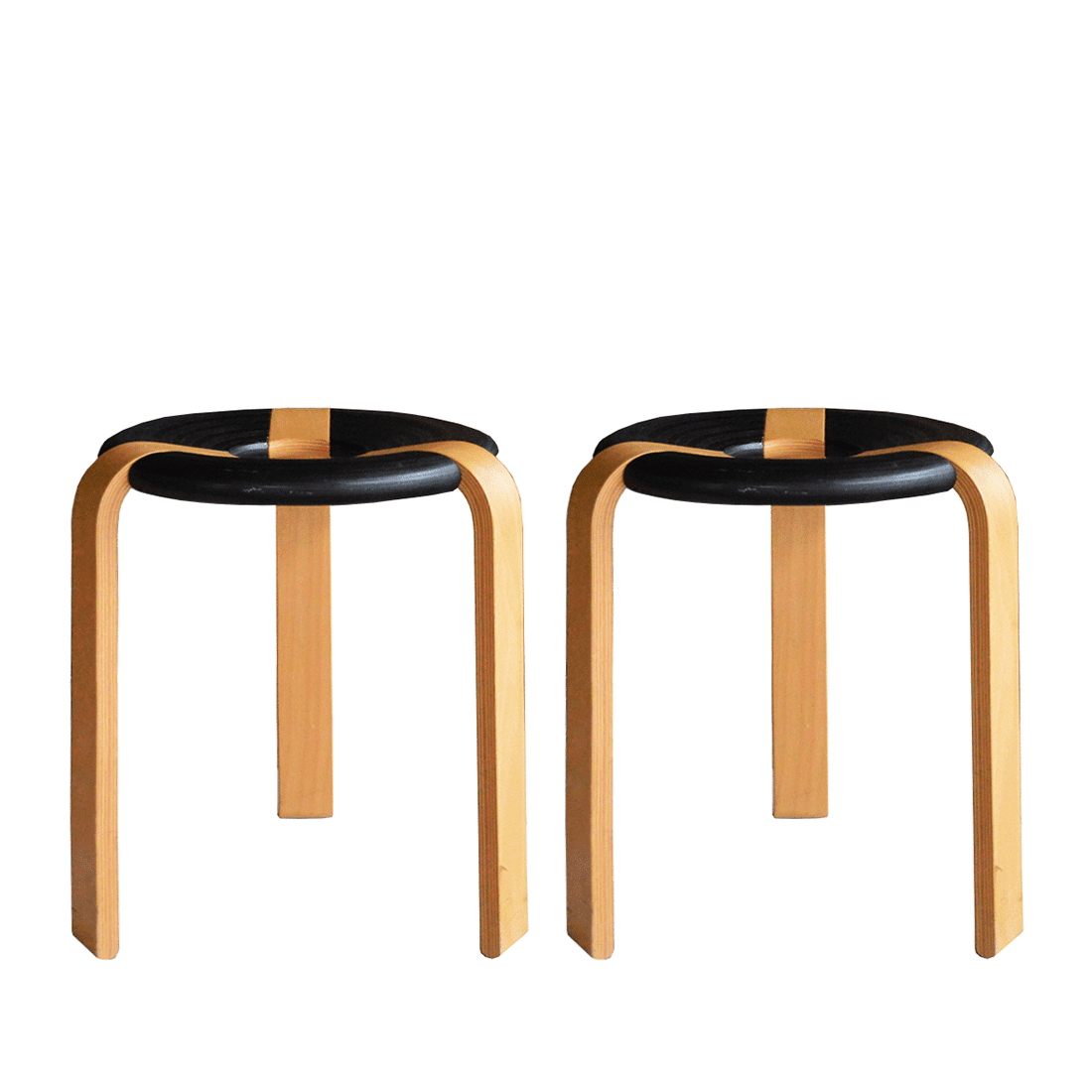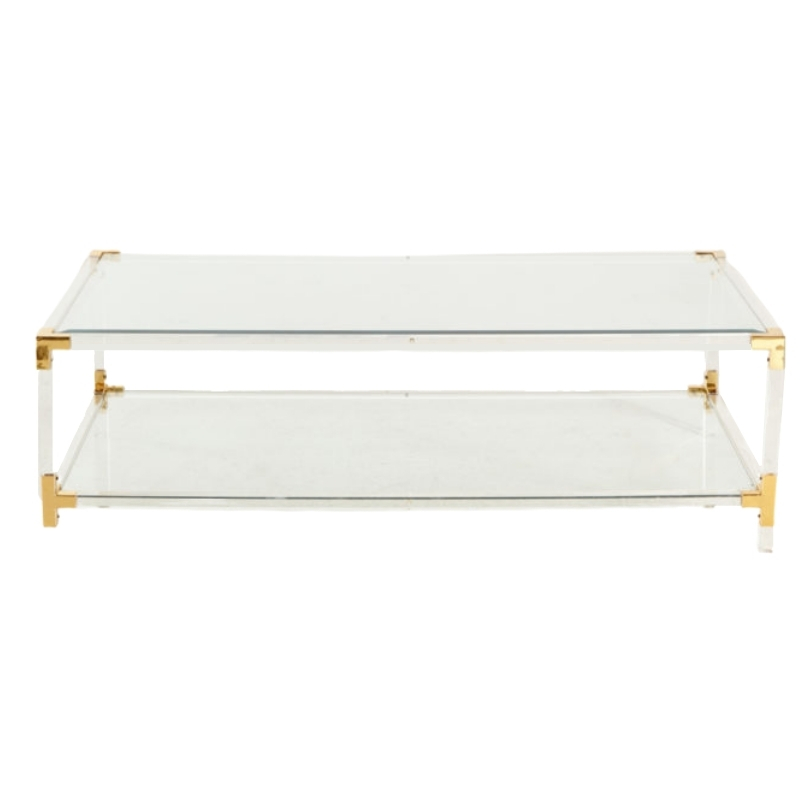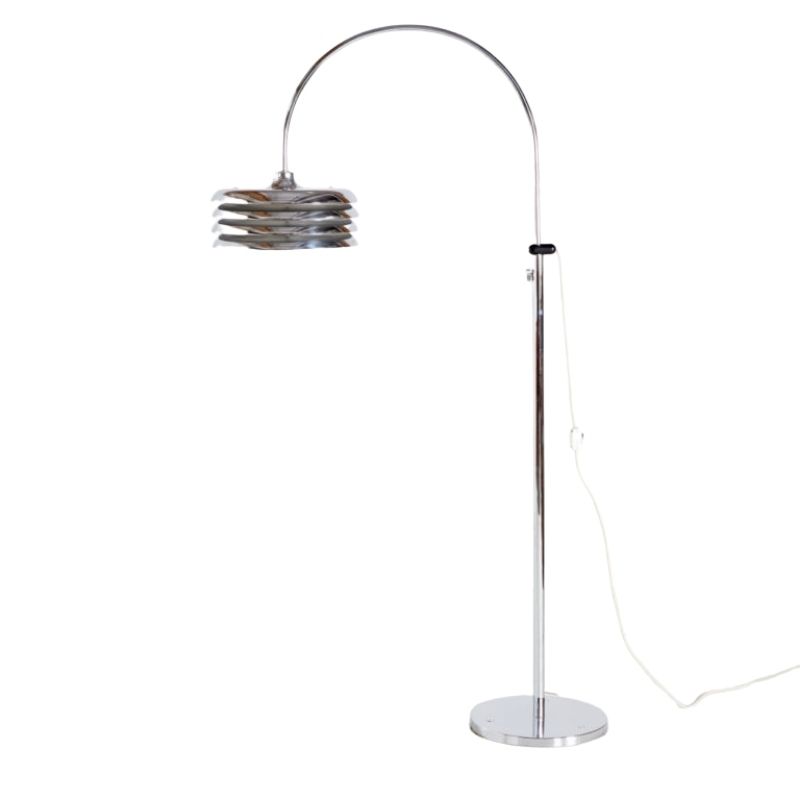Later in 1959, we know that Lunning collection was still distributing Niels Vodder items (courtesy of cdsilva’s 1959 Furniture Forum). Note also, the huge markup on the Chieftain chair. In Denmark it would have cost a little over $200. Lunning’s New York Georg Jensen store was selling it for $680.

In 1966, Finn Juhl wrote a letter to Niels Vodder that reproached him for not selling more of his furniture. Niels Vodder’s reply is interesting. (image courtesy of tchp's copy of Finn Juhl's House). He writes, “If you think as I do that I have your best models, I can certainly understand why you think that they must therefore be bringing in the highest fees. I think that perspective is wrong. Georg Jensen, Inc in New York was a disappointment. Baker, who tried with the lounge chair 45, never got any large sales out of it, and he gave up making armchair 46, it see to me … I’ve never believed in the very high fees. Nor do I believe that large-scale advertising has helped significantly. I think that the many exhibitions, along with the furniture appearing in leading stores, were far better. It is the price … and even more so the style that was the most important reason for sales not being higher.”
Note that here he specifically mentions both Georg Jensen in New York and the very high fees. Lunning’s 5th Ave store charged these very high fees because they had the exclusive right to sell in the USA.
In 1968, danish furniture sales were no longer growing at an enormous rate. Just Lunning had died in 1965, and the new director Jørgen Jenk decided on an initiative to get into the contract furniture market. As part of this he signed Hans Wegner’s Salesco organization to an exclusive distribution deal. It was very short lived, because it resulted in furniture that was 3x-4x more expensive in the USA than Denmark. Interior designers tried to get around the exclusive by buying direct from Denmark. Three months later, the Lunning heirs were forced to sell the company to the Rothschilds, and by 1969, the wholesale furniture side of the business was shut down, and Hans Wegner’s Salesco designs were no longer for sale anywhere in the USA.
Note that this 3x -4x markup is about the same markup rate as Lunning had been charging for the Chieftain.
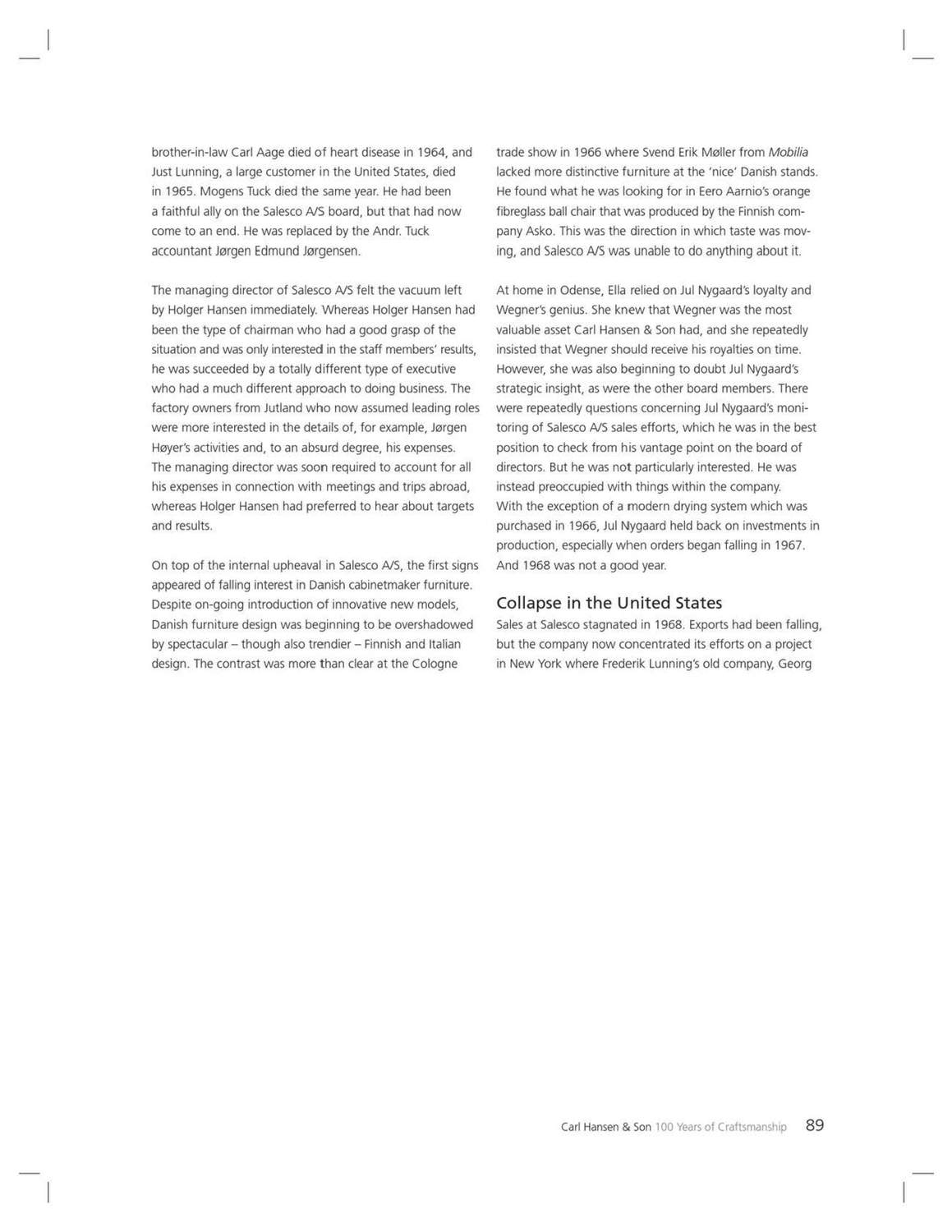
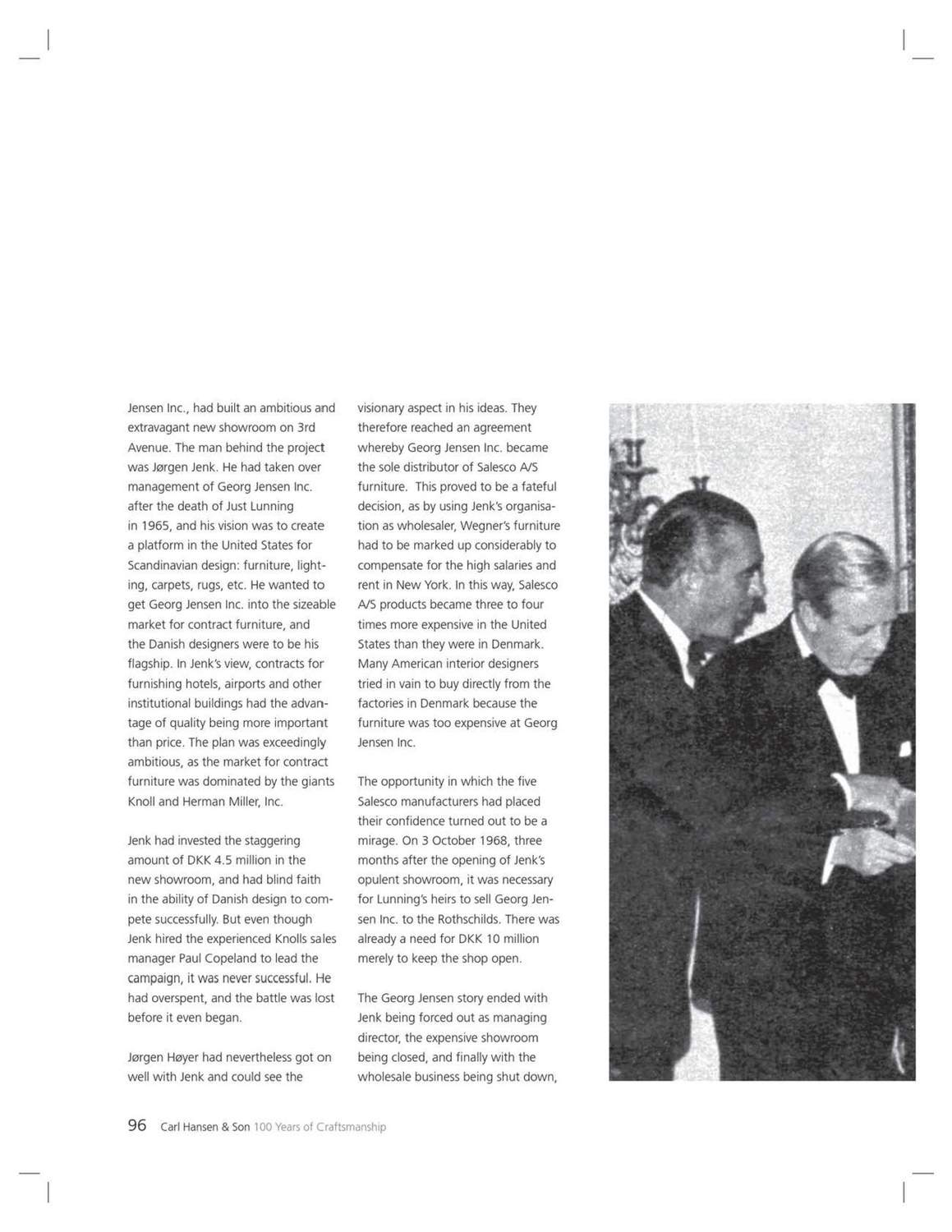
So, backing up, we do not have a record of the contract that Niels Vodder, Finn Juhl, Anders Hostrup-Pedersen of Georg Jensen Sølvsmedie in Copenhagen, and Frederik or Just Lunning signed. We don’t know when it was signed either, but it was before July of 1955. We do know how the families Lunning and Pedersen handled business. And we know that Finn Juhl was close with Anders Hostrup-Pedersen and worked a lot with the larger Georg Jensen organization.
So, we can make an educated guess that the contract would have given Lunning the exclusive right to sell Finn Juhl designs made by Niels Vodder. And it would have mentioned that Niels Vodder was not sell to any persons or firms for resale in the USA. It probably gave Lunning the right to use the Niels Vodder mark in the USA, although Lunning never did register the trademarke. (Note that Lunning did not immediately register the Georg Jensen trademark when he acquired the right to do so. He only registered it later when he wanted to stop the mail order business from Copenhagen).
Now Den Permanente was not just any normal retailer of Danish Furniture. ( http://www.jensensilver.com/den-permanente/). It was the premiere retailer, and as an association of the cabinetmakers it was their major sales presence. Individually, the cabinetmakers did not have the resources to deal with the legal complexities of export sales, and much less the even greater complexities of wholesale export for resale. So Den Permanente became the sales presence for foreign visitors who wanted to buy from the cabinetmakers. It also came to have a department for and later a catalog of export pieces for resale. And if an American wanted to supply a store with ‘grey market’ cabinetmaker furniture purchased in Copenhagen and shipped to the USA, Den Permanente would be the place to go. The American would show up, buy the chair, Den Permanente handles packing and shipping and all the export import paperwork, then the store gets it in the USA and re-sells it. Given the Lunning/Georg Jensen markup there was plenty of space left for profit.
Now, I think we can finally explain how this Niels Vodder made Chieftain chair came to be unmarked. Perhaps the grandmother walked in to Den Permanente and directly asked for wholesale pricing. We do know that at some point she directly asked for wholesale pricing. Perhaps she went to the department Den Permanente had set up for buyers for resale. Perhaps she just made her sales person suspicious that resale might be her intention. Then either the information was passed along to Niels Vodder, or perhaps Niels Vodder took it upon himself to ask Den Permanente so that he could guarantee his integrity with the contract. Niels Vodder was most probably contractually not prohibited from selling and shipping a Chieftain chair through Den Permanente to a buyer in the USA intending to keep the chair. This was definitely not true, though, if the buyer was an person or firm intending to resell the chair, as that would violate his contract giving Lunning the exclusive right to the sales territory.
So the conclusion is that Niels Vodder did not mark this chair because he believed the buyer intended it as a grey market item for resale. His aim was to deny the buyer easy resale because it was not marked. Analogously, the director’s of Georg Jensen knew that their buyers in the USA would balk at unmarked mail order silver, so when Lunning blocked the use of the Georg Jensen mark on mail order pieces from Copenhagen he effectively closed down that loophole market.
And here is another possible contributing motivation for Niels Vodder not to mark the chair: it is not certain that Niels Vodder had the legal right to use his mark on a chair he sold to the USA. Since Lunning never registered a Niels Vodder trademark, we don’t have direct evidence that he owned the right to the mark in the USA. We know that customs at the USA port of entry would not have held the chair up unless there had been a conflicting trademark registration, so the chair would have arrived even if it had been marked.
If legal rights to mark the chair were a consideration for Niels Vodder, a suspicion of resale intent would provide even more reason not to mark. Consider that the risk of discovery is very low for a buyer who is going to keep the chair; it will sit in a buyer’s home, seen only by a handful of friends for many decades. By contrast, a retail store selling the same product can be expected to advertise the product as widely as possible.
As a closing remark, we know that the arrangement with the Georg Jensen store in New York was a disappointment to Niels Voider from his 1966 letter to Finn Juhl. Note the past tense “was.” So some time between 1959 and 1966 the contract came to an end.
The implication is that there is a window of time in which the precise circumstances required for a Finn Juhl by Niels Vodder piece could arise. This window of time was from some time before 1955 until some time before 1966. Maybe more evidence can be found that will further narrow the window.
Here is a list of sources from my research:
Georg Jensen & Wendel A/S vs Georg Jensen Handmade Silver Inc, http://www.leagle.com/decision/1940280111F2d169_1219/
Biography of Anders Hostrup-Pedersen, http://denstoredanske.dk/Dansk_Biografisk_Leksikon/Naturvidenskab_og_tek...
“Finn Juhl” by Esbjørn Hiort, The Danish Architectural Press, 1990
“By Design. Carl Hansen & Son, 100 Years of Craftsmanship” by Frank Motzkus, self published by Carl Hansen, 2008
Den Permanente, by Esbjørn Hiort managing directory of Den Permanente, 1965, http://www.jensensilver.com/den-permanente/
Finn Juhl and his House by Per Hansen, Hatje Cantz, 2104
Leif, That is very well researched and compelling scholarship. Given that the Den Permanente receipt is such strong evidence of Placitas' chair and ottoman being genuine pieces made by Niels Vodder (and I have no personal doubt that they are), the fact that neither piece is marked with the Niels Vodder heat branded stamp does make it seem like it was an omission that was done with intent, rather than just an arbitrary oversight. As you point out, there could be a number of reasons that Niels Vodder may have not stamped the pieces in order to avoid legal problems with Lunning, especially if Placitas' grandmother raised suspicions at Den Permanente when she asked for wholesale pricing.
If you need any help, please contact us at – info@designaddict.com


